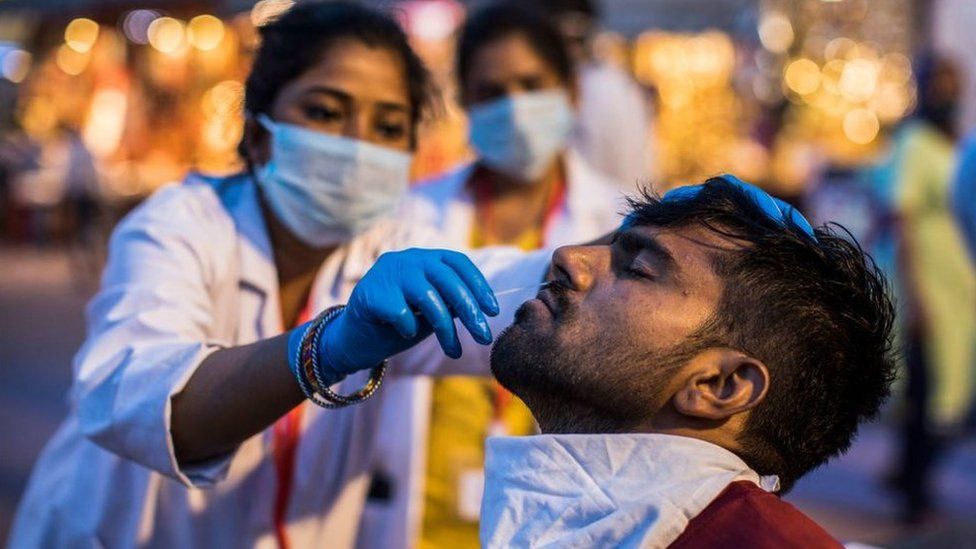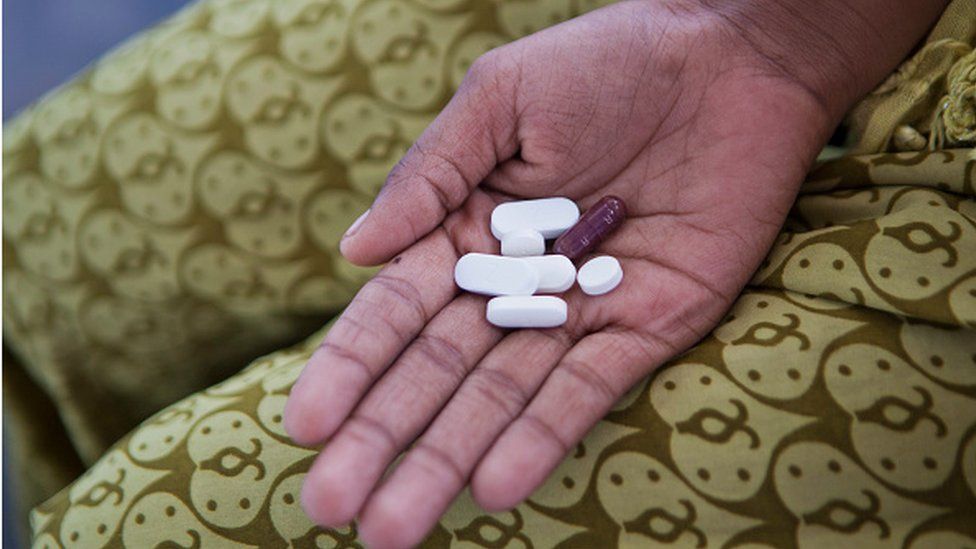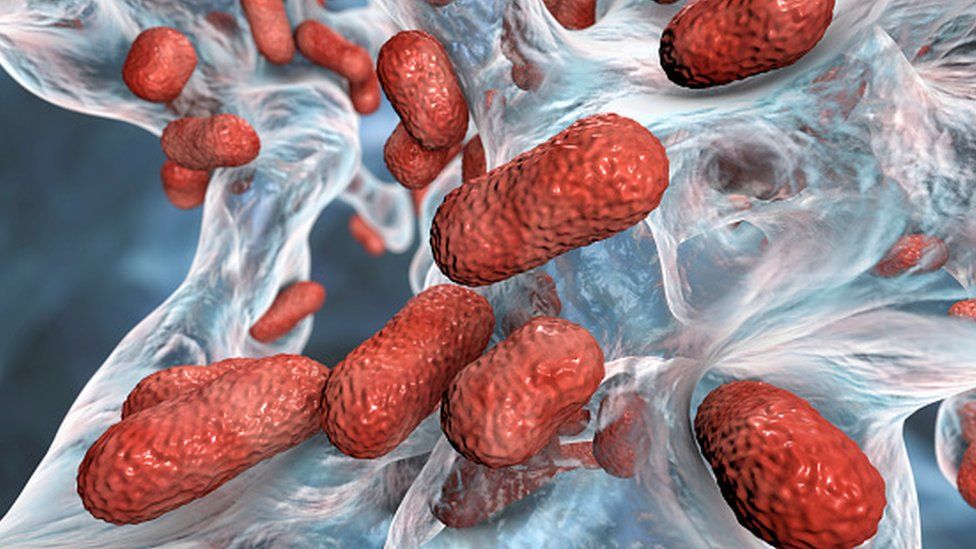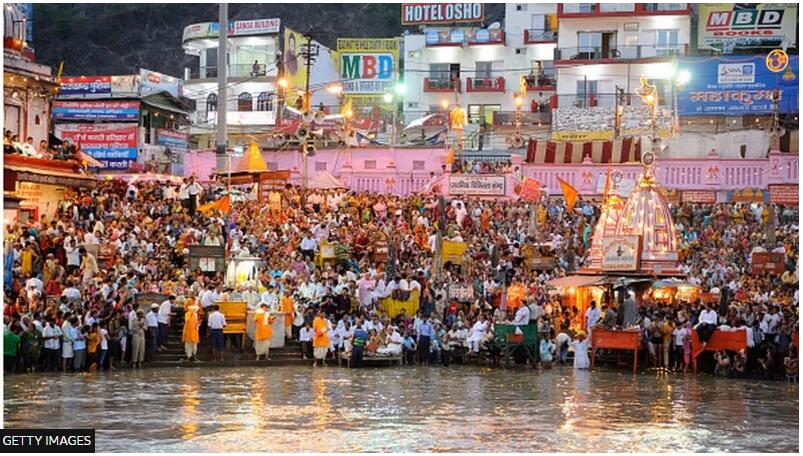Kumbh Mela: Antibiotics and the world’s biggest gathering in India
What does the biggest gathering of humanity on Earth have to do with antibiotics?
Quite a bit, evidently.
Researchers from US-based institutes, supported by Lakshmi Mittal and Family South Asia Institute at Harvard University and Unicef, have found that clinics at India’s Kumbh Mela, a Hindu festival and the world’s largest religious gathering, have prescribed an excessive amount of antibiotics to the tens of thousands of pilgrims, primarily arriving with respiratory tract infections.
The more antibiotics are used, the higher the risk of developing what doctors refer to as “antimicrobial resistance”. This occurs when bacteria change over time and become resistant to drugs designed to combat and treat infections they cause. Consequently, doctors face a surge in antibiotic-resistant “superbug infections”.
The World Health Organisation (WHO) says this poses a major “global threat” to public health. Such resistance directly caused 1.27 million deaths worldwide in 2019, according to The Lancet, a medical journal. The toll is projected to rise to 10 million deaths per year by 2050, says the WHO. Antibiotics – which are considered to be the first line of defence against severe infections – did not work on most of these cases.
India has the highest rate of human antibiotic use in the world. Antibiotic-resistant neonatal infections alone are responsible for the deaths of nearly 60,000 newborns each year. Researchers say use of antibiotics was exacerbated during the Covid-19 pandemic.

The weeks-long Kumbh Mela occurs in four Indian cities. The pilgrims take a holy dip in the river waters on the banks of the cities where the festival is held.
The US-based researchers gathered data from some 70,000 patients who turned up at more than 40 clinics at two editions of the festival in 2013 and 2015 held in the cities of Prayagraj – also known as Allahabad – and Nashik.
More than 100 million pilgrims attended the two festivals. In Prayagraj in 2013, the patients had a median age of 46 years and most of them were men. Their common symptoms included fever, cough, runny nose, muscle pain, and diarrhoea.
Researchers found that more than a third of patients at the clinics were prescribed antibiotics. In Prayagraj, nearly 69% of the patients reporting upper respiratory tract infections received antibiotics at the free state-run clinics at the festival site.
“This is an alarmingly high rate, given that the vast majority of upper respiratory tract infections are viral in nature,” the researchers say in a recently published paper.

Researchers found that entering a clinic at the Kumbh Mela for any reason carried a one-in-three likelihood of walking out with a prescription for antibiotics. If you sought help for a runny nose, the probability increased to two in three.
“When antibiotics were prescribed, there appeared to be little rhyme or reason to guide their selection,” the researchers said.
Their findings align with earlier estimates of antibiotic prescription rates in India, which typically range from 39% to 66% in outpatient settings.
The researchers conceded that doctors at the Kumbh Mela’s crowded clinics faced significant challenges, including high patient volumes, limited time and a lack of comprehensive patient diagnostic information.
Each clinic sees hundreds of patients a day, doctor-patient encounters are cursory and patients expect to be prescribed medicines for their aliments. Doctors spent less than three minutes on average with each patient, “often prescribing antibiotics without examining the patient”. The choice and dosage of antibiotics “appeared arbitrary”.
Official protocols allowed a three-day supply of antibiotics along with a recommendation for a follow-up visit. However, researchers observed that, with a few exceptions, the vast majority of pilgrims only made a day trip to the festival and returned home.

The researchers have recommended a number of measures to cut back prescription of antibiotics in the upcoming festivals. They say that most people who turn up at the clinics do not need the attention of a physician. So, they recommend that mid-level health providers, medical students and community health workers identify patients and implement triage. Fewer patients would reduce fatigue among the doctors.
The clinics should be beefed up with adequate diagnostics such as laboratory or radiology services. Lack of diagnostics, they believe, could lead to over-prescription of antibiotics. Also, doctors needed to be educated more in antibiotic use and the policy of providing a three-day antibiotic dose should be re-examined.
“Public health preparedness and response seems to be marked by a string of missed opportunities,” said Satchit Balsari, one of the researchers and an assistant professor of emergency medicine at Harvard Medical School.
The 2013 festival in Prayagraj was one of the first mass gatherings to have cloud-based near real time disease surveillance. The Nashik edition in 2015 replaced paper-based records with digital tablets, laying the foundation for continuous epidemiological surveillance.
“In both instances, there was little institutional memory that could either expand the intervention to all primary clinics, or even leverage it during the [coronavirus] pandemic,” Prof Balsari told me.
He said the 2025 festival in Prayagraj could lay the foundation for functional digital health infrastructure that does three simple tasks – identify the diseases in the city based on clinical, laboratory and drug utilisation and sewage data.
Experts believe India needs to strengthen regulations around prescribing antibiotics. – and the world’s largest gathering of humanity would be a good starting point.
